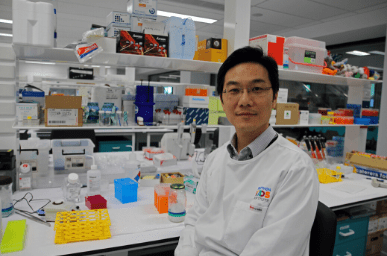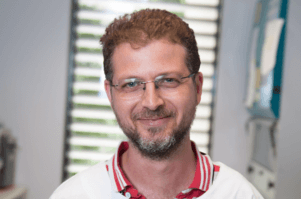
September marks Childhood Cancer Awareness Month. In Australia alone, nearly 1,000 children are diagnosed with cancer every year, which is why funding new research into all types of childhood cancer is so crucial.
Cancer is a disease that occurs when abnormal cells in the body grow in an uncontrolled way. The types of cancers that occur in children, and the way they respond to treatment, can be different to cancers that occur in adults.
In children, age is not a risk factor for cancer, but the incidence of some cancers varies with age. Some childhood cancers tend to appear in very young children and others in older children. Family history also plays a part because some childhood cancers run in families.
Common childhood cancer types include:
- Leukaemia
- Brain and other central nervous system tumours
- Hodgkin lymphoma
- Non-Hodgkin lymphoma
- Neuroblastoma
- Soft tissue sarcoma
- Kidney tumours
- Melanoma
- Bone tumours
- Germ cell tumours
- Retinoblastoma
- Liver tumours
Cure Cancer is the only charity in Australian that funds early-career researchers specialising in all cancer types, including childhood cancer. This month, we profile two of their leading childhood cancer researchers, Dr Laurence Cheung and Dr Orazio Vittorio .
Dr Laurence Cheung

Laurence’s career progression has been unusual for a cancer researcher . A pharmacist by training, he originally worked as a community pharmacist in Perth for eight years, a period in which he came across parents whose children had leukaemia. Their stories helped motivate him to change careers; a decision made more personal as a father. With three young children,
Laurence seeks quality time with his family when not at work. “I want parents whose children suffer from leukaemia to be able to do the same.”
The most common form of blood cancer in children is acute lymphoblastic leukaemia, known as ALL. Improvements in therapy over the past sixty years have seen cure rates improve to more than 90%, but several high-risk genetic patient subgroups have much lower outcomes. Some of these children have less than a 40% chance of survival.
This is an area of particular concern and research interest for Laurence, now a Senior Lecturer at Western Australia’s Curtin University and Senior Research Officer at the WA Telethon Kids Institute.
“Better therapies for high-risk patients are desperately needed,” says Laurence. His Cure Cancer-funded research aims to study the development of high-risk ALL in bone marrow and the interaction of leukaemia cells with neighbouring cells – commonly known as the leukaemia microenvironment. From this, he will evaluate whether restoring the healthy microenvironment can improve treatment outcomes for children with leukaemia.
“The microenvironment of solid tumours has been well investigated as a factor in the progression of cancer, its resistance to therapy, spread and relapse,” explains Laurence. However, scientists have only recently begun to appreciate the importance of the blood cancer microenvironment.
“Over the past 20 years, clinical studies have clearly shown the defective bone marrow structure and bone loss in children and infants diagnosed with leukaemia,” he says. “Yet we know little about how normal bone and bone marrow cells are involved in the start, progression and relapse of the disease.”
Laurence’s research is focused on one novel strategy: to target cells surrounding leukaemia cells when treating patients. In this way, he aims to reduce the impact of cancer and lessen the short- and long-term toxic side effects of traditional drug treatments for children diagnosed with ALL.
With Australian and US collaborations, Laurence has already established a preclinical model that replicates the clinical features of bone loss in children with ALL at diagnosis. This provides an avenue for researchers to understand the ‘communication networks’ among cells in bone marrow when leukaemia develops. Additionally, the team recently completed a proof-of-concept study showing that targeting the leukaemia microenvironment can not only stop bone loss but hamper the progression of the disease.
The Cure Cancer grant is the first national research funding Laurence has received, a significant boost to his growing career. “I’m very grateful to Cure Cancer for providing me with this opportunity! I’m now a step closer to establishing myself as an independent researcher and can continue to contribute to the field of the leukaemia microenvironment.”
Laurence’s grant is co-funded by Cure Cancer with Cancer Australia and Leukaemia Foundation.
Dr Orazio Vittorio

Orazio is a Project Leader at the Children’s Cancer Institute , University of New South Wales, working under the mentorship of Cure Cancer alumni Professor Maria Kavallaris . He completed his PhD in Oncology at the University of Pisa in February 2011, during which he was diagnosed with kidney cancer. ‘I was lucky the tumour was found when it was small, so my chances of survival were good,’ he says. ‘It gave me more reasons to put all my efforts into cancer research. In 2011 I became a father and decided to focus my research in finding better cures for childhood tumours like neuroblastoma. Children are our future!’
Neuroblastoma is an aggressive childhood cancer for which survival rates are low, despite the use of intensive therapy. In his current research, Orazio aims to study and develop drugs that target neuroblastoma cells, and which have fewer side effects than conventional chemotherapies.
In particular, he aims to target copper in cancer cells. Neuroblastoma tumours contain high levels of copper compared to normal cells, so Orazio has developed a compound (dextran-catechin) which can kill cancer cells with high copper levels and is less toxic than chemotherapy treatments.
‘My project will contribute knowledge to neuroblastoma biology and help develop new, targeted treatments for tumours whose growth depends on copper,’ says Orazio. ‘ We aim to establish a therapeutic strategy to increase survival rates and improve the quality of life of patients.’
Quality of life is a huge issue for survivors. The survival rate of neuroblastoma patients is about 50%, and these people must deal with short and long-term side effects of treatment for the rest of their lives, including increased risk of heart disease.
In 2020, Orazio's breakthrough research on copper removal was also published in the prestigious Cancer Research, a journal of the American Association for Cancer Research.
Orazio is fully aware of how difficult it is for early-career researchers to get grants and offers them this advice: ‘Be strong, believe in your projects, have a passion for science, a natural curiosity and be a good team player. We need to try and try again until we succeed.’
Orazio was previously co-funded by Cure Cancer and Cancer Australia, supported by Sydney Airport.
To show your support for childhood cancer researchers like Laurence and Orazio this Childhood Awareness Month, make a donation today.